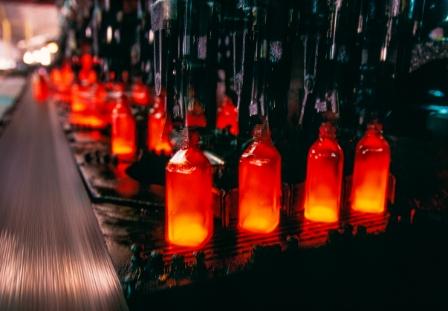Glass Manufacturing Effluent Guidelines
 EPA initially promulgated the Glass Manufacturing Effluent Guidelines and Standards (40 CFR Part 426) in 1974 and 1975, and amended the regulation in 1979 and 1986. The regulation covers direct
EPA initially promulgated the Glass Manufacturing Effluent Guidelines and Standards (40 CFR Part 426) in 1974 and 1975, and amended the regulation in 1979 and 1986. The regulation covers direct![]() direct dischargerA point source that discharges pollutants to waters of the United States, such as streams, lakes, or oceans. and indirect
direct dischargerA point source that discharges pollutants to waters of the United States, such as streams, lakes, or oceans. and indirect![]() indirect dischargerA facility that discharges pollutants to a publicly owned treatment works (municipal sewage treatment plant). dischargers. The Effluent Guidelines and Standards are incorporated into NPDES permits for direct dischargers and permits or other control mechanisms for indirect dischargers (see Pretreatment Program).
indirect dischargerA facility that discharges pollutants to a publicly owned treatment works (municipal sewage treatment plant). dischargers. The Effluent Guidelines and Standards are incorporated into NPDES permits for direct dischargers and permits or other control mechanisms for indirect dischargers (see Pretreatment Program).
- What is the Glass Manufacturing Industry?
- Pollutants and Subcategories
- Rulemaking History
- Additional Information
What is the Glass Manufacturing Industry?
- Cullet quenching
- Cooling water (usually non-contact)
- Air emission control devices (e.g. scrubbers)
- Product rinsing
- 3272 – Glass and glass product manufacturing
- 327993 – Mineral wool manufacturing
Pollutants and Subcategories
Regulated Pollutants
- ammonia
- BOD5
- COD
- fluoride
- lead
- oil
- phenol
- phosphorus
- pH
- TSS
Regulation Subcategories
- Insulation Fiberglass
- Sheet Glass
- Rolled Glass
- Plate Glass
- Float Glass
- Automotive Glass Tempering
- Automotive Glass Laminating
- Glass Container
- Glass Tubing (Danner process)
- Television Picture Tube Envelope
- Incandescent Lamp Envelope
- Hand Pressed and Blown Glass
Rulemaking History
Amendments
- BCT amendments:
- Revised methodology documents:
- Final Rule (July 9, 1986)
- Proposed Rule (October 29, 1982)
- Initial methodology documents:
- Final Rule (August 29, 1979)
- Proposed Rule (August 23, 1978)
- Revised methodology documents:
Initial Rulemaking
1975 rule
- Documents, including:
- Final Rule (January 16, 1975)
- Development Document – Pressed and Blown Glass (Subparts H-M) (January 1975)
Industry description, wastewater characterization, treatment technologies, regulatory compliance cost estimates and pollutant loadings for the final rule - Proposed Rule (August 21, 1974)
1974 rules
- Documents, including:
- Final Rule (February 14, 1974)
- Development Document – Flat Glass (Subparts B-G) (January 1974)
- Proposed Rule (October 17, 1973)
- Documents, including:
- Final Rule (January 22, 1974)
- Development Document – Insulation Fiberglass (January 1974)
- Proposed Rule (August 22, 1973)
Additional Information
For additional information regarding Glass Manufacturing Effluent Guidelines, please contact Phillip Flanders (flanders.phillip@epa.gov) or 202-566-8323.
